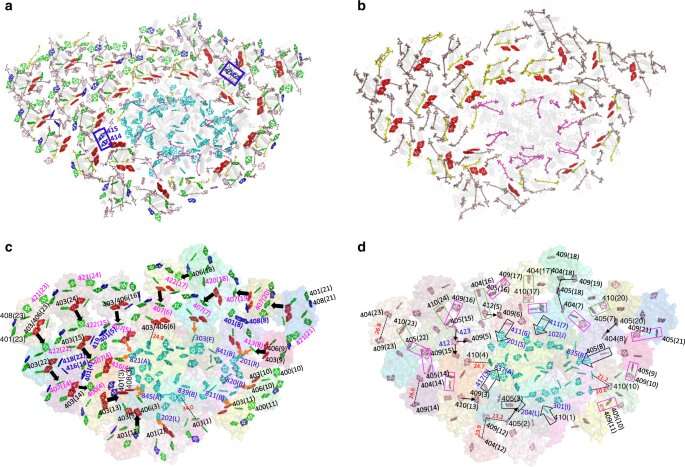Structure of photosystem protein supercomplex from diatom reveals its highly sophisticated energy transfer network

Diatoms are a group of phytoplankton that is widely distributed in the hydrosphere and even in moist soil. They play important roles in global carbon-oxygen cycles and provide valuable products and biomasses. Diatom cells are brown due to the presence of special chlorophylls (Chl), Chl c, as well as carotenoids fucoxanthins and diadinoxanthins.
Differing from those in green algae and higher plants, the photosystem I (PSI) of diatom binds a large number of fucoxanthin-chlorophyll a/c binding protein I (FCPI) as peripheral antennas to harvest more blue-green light underwater.
A research team from the Institute of Botany of the Chinese Academy of Sciences solved the structure of a PSI-FCPIs supercomplex from a marine centric diatom Chaetoceros gracilis.
In this study, the PSI-FCPI protein was extracted and purified from thylakoid membranes of the diatom chloroplast. Then its structure was solved by single particle cryo-electron microscopy, which showed that PSI-FCPI is a monomer composed of a reaction center and 24 FCPIs surrounding it. It is the largest monomeric PSI associated with the largest number of light-harvesting antennas found so far.
Compared with red algae, diatom PSI lost PsaK and PsaO in the core complex, but has two new subunits, PsaR and PsaS. PsaR is involved in stabilizing the peripheral FCPI antenna and energy transfer from the FCPI subunits to the PSI core, whereas the function of PsaS is unknown.
The 24 FCPI subunits all exist in monomers, and are distributed into three layers surrounding the PSI core. The first layer is a closed ring composed of 11 FCPI subunits surrounding the PSI core, whereas the second is a semi-ring composed of 10 FCPI subunits and the third layer is composed of only 3 FCPI subunits and located at one side of the core.
The whole structure of PSI-FCPI supercomplex contains 326 Chls a, 34 Chls c, 102 fucoxanthins, 35 diadinoxanthins, 18 β-carotenes and some electron transfer cofactors. The large number of pigments constitute a unique, huge network ensuring efficient energy harvesting, transfer and dissipation.
These results provide a firm structural basis for unraveling the mechanisms of light-energy harvesting, transfer and quenching in the diatom PSI-FCPI, and also important clues to evolutionary changes of PSI-LHCI.
This study, titled "Structural basis for energy transfer in a huge diatom PSI-FCPI supercomplex," was published in Nature Communications on October 8, 2020.
More information: Caizhe Xu et al. Structural basis for energy transfer in a huge diatom PSI-FCPI supercomplex, Nature Communications (2020). DOI: 10.1038/s41467-020-18867-x
Journal information: Nature Communications
Provided by Chinese Academy of Sciences




















